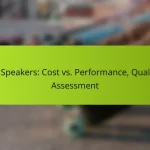Maintaining the durability of DJ equipment is crucial for ensuring its longevity and optimal performance. Regular care, including cleaning, proper storage, and routine inspections, plays a vital role in protecting sensitive components from damage. Additionally, understanding the specific needs of different types of gear can help DJs make informed choices about maintenance and care practices.
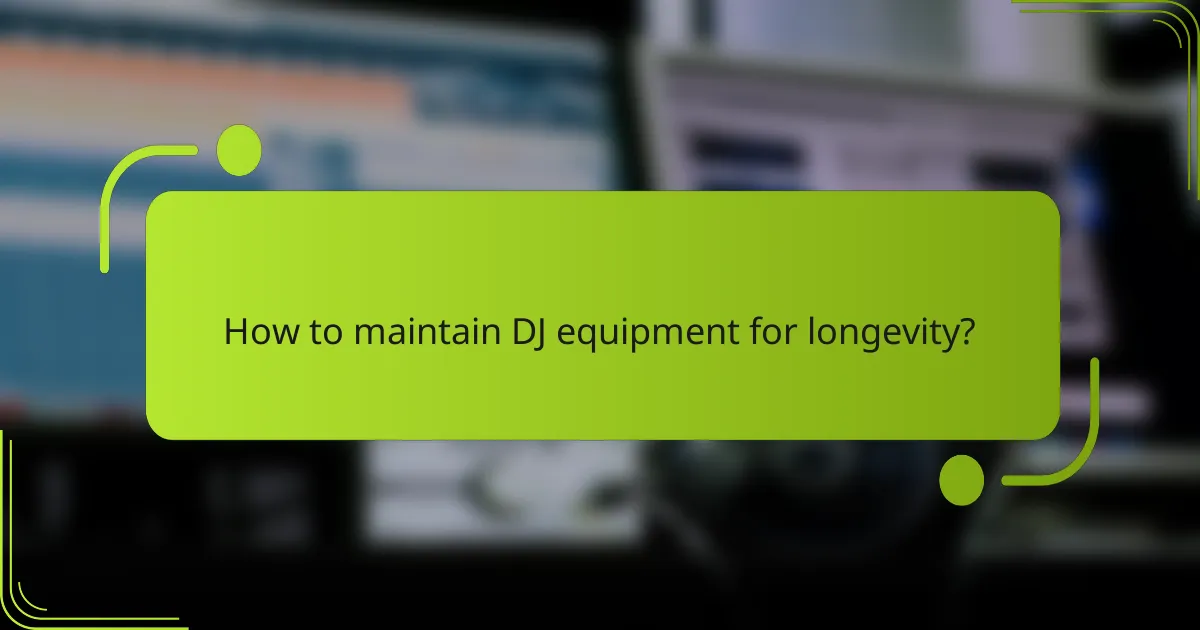
How to maintain DJ equipment for longevity?
To ensure the longevity of DJ equipment, regular maintenance and care are essential. This involves cleaning, proper storage, routine inspections, and using protective cases to shield against environmental factors.
Regular cleaning techniques
Cleaning DJ equipment regularly helps prevent dust and grime buildup, which can affect performance. Use a soft, lint-free cloth to wipe surfaces and avoid harsh chemicals that could damage components.
For equipment like turntables and mixers, consider using specialized cleaning solutions designed for electronics. Regularly check and clean connections and cables to maintain optimal sound quality.
Proper storage practices
Storing DJ equipment properly is crucial for its longevity. Always keep gear in a cool, dry place, away from direct sunlight and humidity, which can cause damage over time.
When not in use, store equipment in its original packaging or padded bags to protect against impacts. Avoid stacking heavy items on top of your gear to prevent physical damage.
Routine inspections
Conducting routine inspections helps identify potential issues before they escalate. Check for loose connections, frayed cables, and any signs of wear on components.
Schedule inspections every few months, especially if the equipment is frequently transported. This proactive approach can save you from costly repairs and downtime.
Use of protective cases
Using protective cases is an effective way to safeguard DJ equipment during transport. Invest in high-quality cases that fit your gear snugly to prevent movement and impact damage.
Look for cases with padded interiors and waterproof exteriors for added protection. This investment can significantly extend the lifespan of your equipment.
Environmental considerations
Environmental factors play a significant role in the maintenance of DJ equipment. Avoid exposing gear to extreme temperatures, moisture, or dust, as these can lead to malfunctions.
When performing outdoors, use covers or tents to shield equipment from rain or direct sunlight. Consider using dehumidifiers in storage areas to control humidity levels.
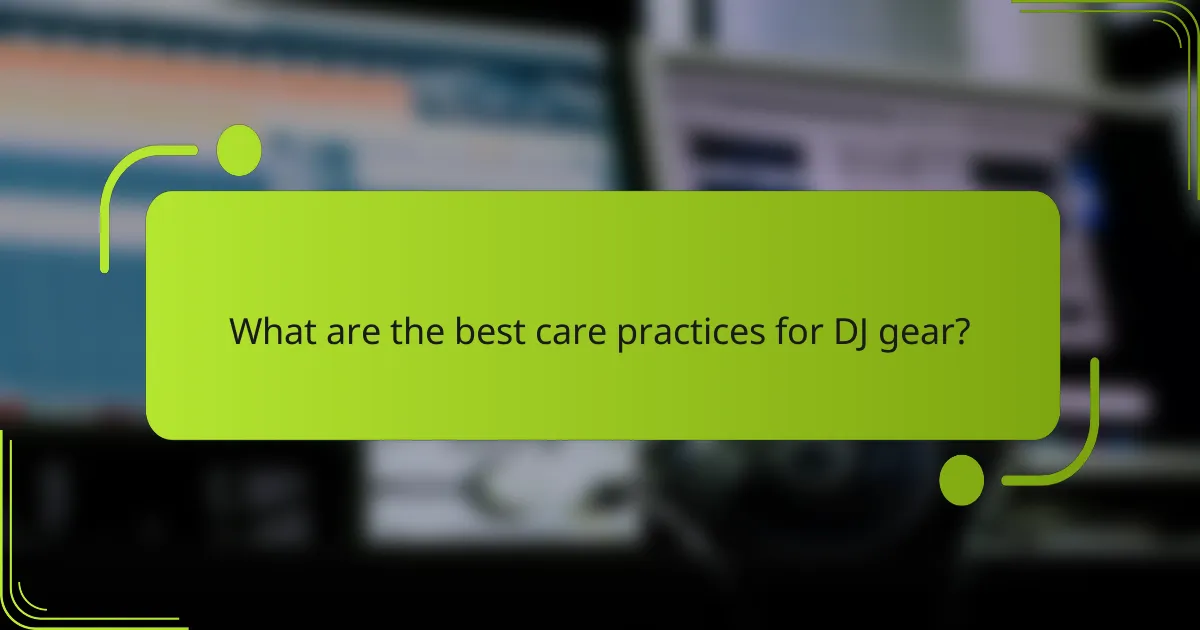
What are the best care practices for DJ gear?
To ensure the longevity and optimal performance of DJ gear, regular maintenance and proper care are essential. This includes routine cleaning, careful handling of sensitive components, and using appropriate products to avoid damage.
Cleaning frequency recommendations
Cleaning your DJ equipment should be done regularly, ideally after every gig or at least once a month for home setups. Dust and grime can accumulate quickly, affecting performance and aesthetics.
For high-use items like turntables and mixers, consider a more frequent cleaning schedule, perhaps weekly. This helps maintain functionality and prevents buildup that could lead to malfunctions.
Recommended cleaning products
Use microfiber cloths for wiping down surfaces, as they are gentle and effective at removing dust without scratching. For deeper cleaning, a mild electronics-safe cleaner is recommended.
Avoid harsh chemicals or abrasive materials; these can damage sensitive components. Look for products specifically designed for electronic equipment to ensure safety and effectiveness.
Handling tips for sensitive components
Always handle DJ gear with clean hands to prevent oils and dirt from transferring to surfaces. When transporting equipment, use padded cases to protect against impacts and vibrations.
Be cautious with knobs, faders, and buttons; excessive force can lead to wear or breakage. When setting up or packing down, take your time to avoid rushing and potentially damaging sensitive parts.
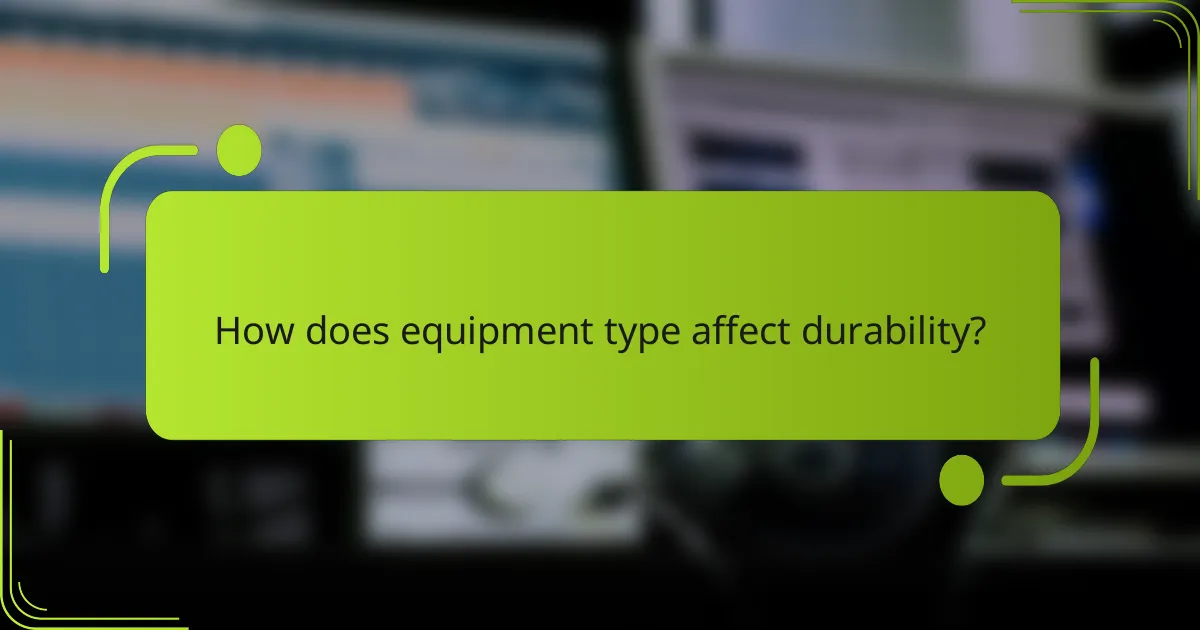
How does equipment type affect durability?
The type of DJ equipment significantly influences its durability, as different components are designed for varied usage and environmental conditions. Understanding these differences helps in choosing the right gear and maintaining it effectively for longevity.
Durability of DJ mixers
DJ mixers are often subjected to heavy use, making their durability crucial for performance. High-quality mixers typically feature robust materials and components, which can withstand frequent adjustments and transport. Look for mixers with metal chassis and quality faders to enhance lifespan.
Regular maintenance, such as cleaning the faders and connections, can prevent wear and tear. Avoid exposing mixers to extreme temperatures or moisture, as these conditions can damage internal circuitry.
Durability of turntables
Turntables require careful consideration regarding durability, especially since they are sensitive to vibrations and handling. Models with heavy platters and solid construction tend to perform better over time. Investing in a turntable with a good suspension system can also mitigate damage from movement.
To maintain turntable durability, keep the stylus clean and replace it as needed. Store turntables in protective cases when not in use, and avoid placing them in direct sunlight or near heat sources.
Durability of speakers
Speakers are essential for sound quality and can vary widely in durability based on their design and materials. Professional-grade speakers often use high-quality components that resist wear from continuous use. Look for models with weather-resistant features if you plan to use them outdoors.
To extend speaker lifespan, avoid pushing them to their maximum volume for extended periods, as this can cause overheating. Regularly check connections and cables for wear, and clean the speaker cones gently to prevent dust buildup.
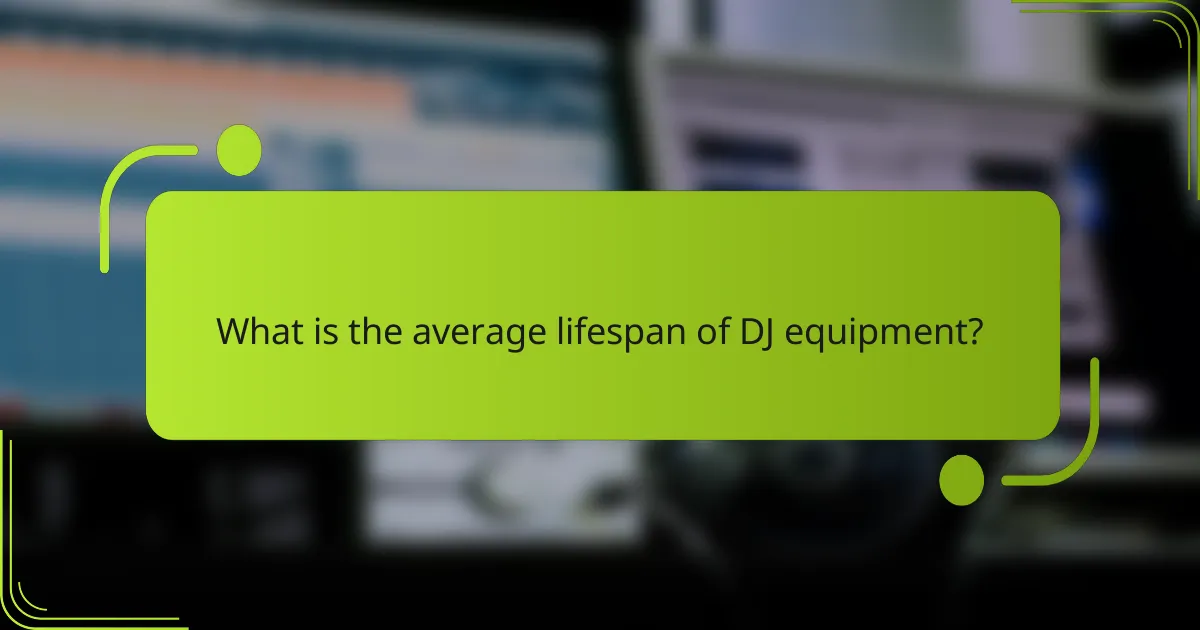
What is the average lifespan of DJ equipment?
The average lifespan of DJ equipment varies widely depending on the type of gear and how well it is maintained. Generally, with proper care, DJ gear can last anywhere from 5 to 15 years, with some high-end models lasting even longer.
Factors influencing lifespan
Several factors can significantly influence the lifespan of DJ equipment. The quality of materials used in construction, frequency of use, and environmental conditions all play a role. For instance, equipment used in professional settings may wear out faster than gear used for personal enjoyment.
Regular maintenance practices, such as cleaning and proper storage, can extend the life of your equipment. Avoiding exposure to extreme temperatures, humidity, and dust can also help preserve functionality over time.
Expected lifespan of popular brands
Different brands have varying reputations for durability. For example, brands like Pioneer and Technics are often noted for their robust construction and can last over a decade with proper care. In contrast, entry-level brands may have a shorter lifespan, typically around 3 to 5 years.
It’s essential to consider warranty periods as an indicator of expected lifespan. Many reputable brands offer warranties ranging from 1 to 3 years, reflecting their confidence in the durability of their products. Investing in higher-quality brands can often lead to better long-term value.
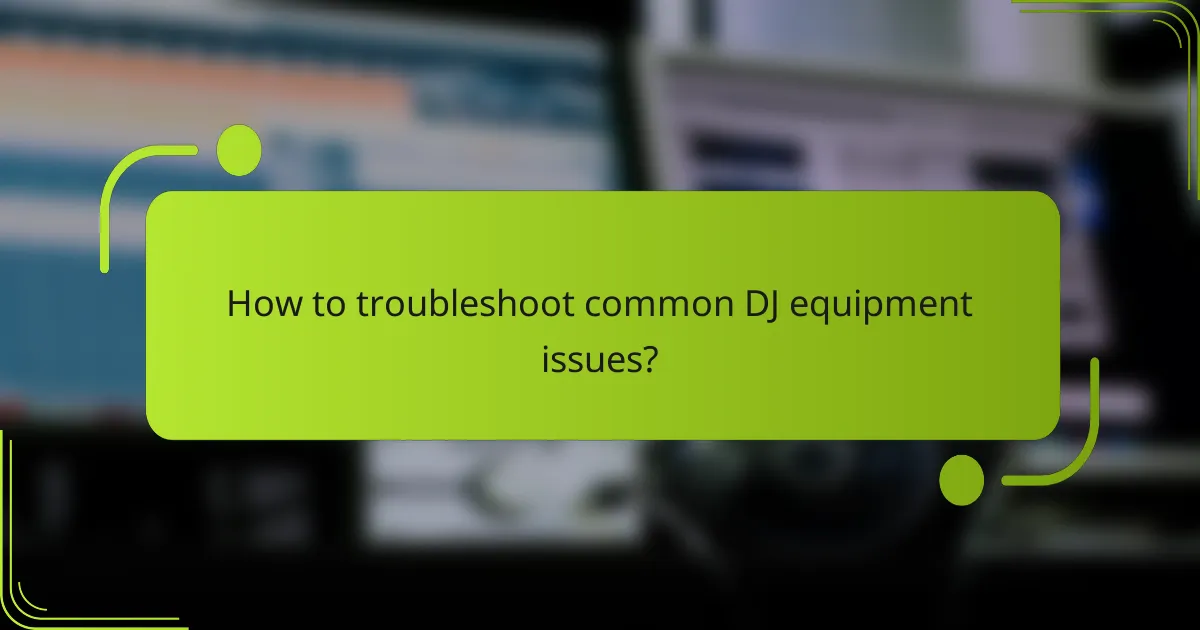
How to troubleshoot common DJ equipment issues?
Troubleshooting common DJ equipment issues involves identifying the problem, assessing the equipment, and applying specific solutions. Regular maintenance and understanding of your gear can significantly reduce the frequency of these issues.
Identifying sound quality problems
Sound quality problems can manifest as distortion, uneven volume levels, or unwanted noise. Start by checking the audio source, cables, and connections to ensure everything is secure and functioning properly.
If the issue persists, inspect the speakers and mixer settings. Adjusting equalizer settings or replacing worn-out cables can often resolve these sound quality concerns. Regularly cleaning your equipment can also help maintain optimal sound performance.
Fixing connectivity issues
Connectivity issues often arise from faulty cables or incorrect settings. Begin by examining all connections, ensuring that cables are firmly plugged in and undamaged. If using wireless equipment, check the battery levels and signal strength.
For persistent connectivity problems, consider testing with different cables or devices to isolate the issue. Additionally, resetting the equipment or updating firmware can resolve compatibility issues. Keeping spare cables on hand can prevent downtime during performances.

